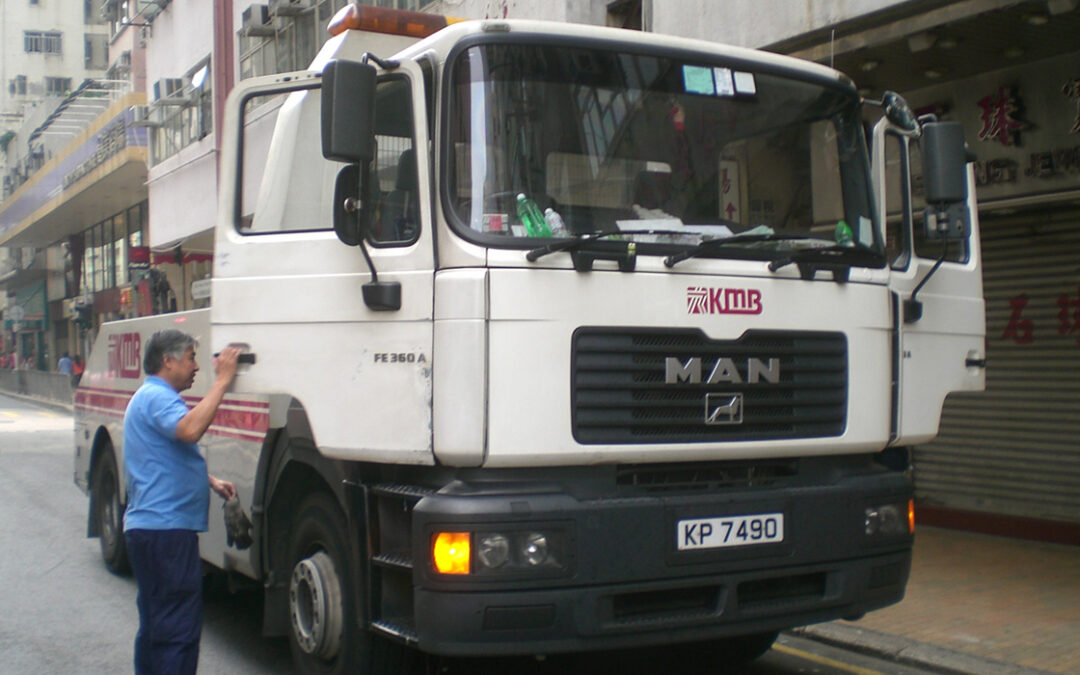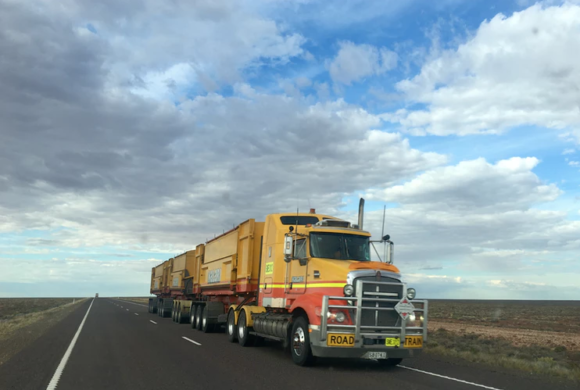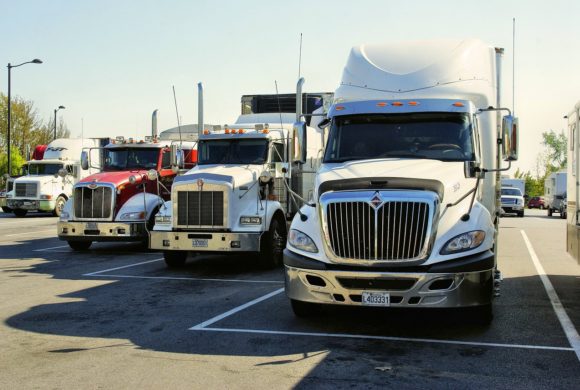
by Queener Law | Jul 17, 2018 | Colorado, Kentucky, Tennessee, Trucking Accident
Truck Driver Shortage
The nationwide truck driver shortage could result in younger truckers behind the wheel of big rigs that cross state lines, raising the risk for truck accidents. Commercial drivers who are between the ages of 18 and 21 are six times likelier to be involved in fatal trucking accidents than older, more experienced drivers. The push to lower the interstate truck driving age comes in response to a stronger economy and the increased demand for truckers across the U.S. The shortage is expected to grow as today’s drivers begin retiring.
There is currently a truck driver shortage across the country because of the improved economy. In 2016, the trucking industry was short by 36,500 drivers, and the number was expected to reach 50,000 by the end of 2017. The shortage is expected to increase to 176,000 by 2026. Retirement is one factor causing the shortage of truckers. According to the American Trucking Association, the average age for truck drivers is just 49. Another reason for the shortage is the improved economy. Consumers have a higher demand for goods, which necessitates more freight. Because unemployment rates are low and truck driving is hard, it is becoming more difficult to attract enough drivers to the industry.
Proposed Law to Decrease Minimum Age
In response to the shortage, Representative Duncan Hunter of California has proposed a law that would decrease the minimum age for over-the-road truck drivers from 21 to 18. Proponents of the law argue that lowering the age would attract more drivers straight out of high school because they wouldn’t have to wait for three years after graduating. They argue that younger drivers are currently allowed to drive short distances within their own states but not to cross state lines. Opponents to the law argue that young drivers between ages 19 and 20 are six times more likely to be involved in fatal truck accidents than are older drivers. They argue that the law would place an unreasonable degree of risk on the public because younger drivers are simply not as safe as older drivers. If the law is passed, more younger drivers may be on highways across the nation. This could increase the danger of trucking accidents to the public at large.

by Queener Law | May 16, 2018 | Tennessee, Trucking Accident
The move to autonomous trucks may place added stress on Tennessee truck drivers and lead to new dangers from fatigue, disengagement and the potential for cyber terrorism. While manufacturers tout the safety of autonomous vehicles, their advent has led to questions about liability and concerns about the reaction times of drivers when they are forced to take control of the trucks in emergency situations. The Federal Motor Carrier Safety Administration recently conducted a listening session to talk about some of the potential issues that could happen when large trucks are traveling on the roadways. The agency is trying to determine what type of regulations might be in order for autonomous trucks.
Potential Dangers of Autonomous Trucks
According to Mark Rosekind, the former administrator of the National Highway Traffic Safety Administration, truck drivers who are assigned to these trucks may quickly become complacent and experience passive fatigue while they are monitoring autonomous systems and are not in control of the trucks. Among the major accidents investigated by the National Transportation Safety Board in the last few years, 20 percent were caused by fatigue.
A researcher from the Institute for Simulation and Training at the University of Central Florida conducted a study of drivers in vehicles with level 3 automation, which is when vehicles are in full automation mode but drivers are expected to remain in the vehicles and take over in the case of an emergency. The researcher found that the drivers became disengaged and exhibited passive fatigue starting about 10 minutes after they began operating the vehicles in autonomous mode. When the researcher presented a simulated emergency situation of another vehicle pulling out into traffic ahead of the vehicles, he found that the drivers’ reaction times were much slower. Passive fatigue caused slower reaction times than active fatigue.
Other concerns include the potential for attacks on interconnected systems by cyber terrorists. If cyber terrorists are able to hack into the systems that control autonomous trucks, they could wreak havoc and cause the loss of many lives in large truck accidents. There are also concerns about liability in accidents that might be caused by autonomous trucks. The FMCSA is considering ways to regulate autonomous trucks to make them safer for everyone.

by Queener Law | Apr 19, 2018 | Tennessee, Trucking Accident
In Tennessee, truck drivers are prohibited from using their cell phones with their hands, but hands-free systems, which are also distracting, are allowed. The Federal Motor Carrier Safety Administration prohibits the use of handheld cell phones while truck drivers are driving. The drivers are also forbidden from using hands-free phones if they must press more than one button to make a call. While the FMCSA recognizes the dangers of texting while driving and has moved to make doing so illegal, using a hands-free system is also distracting and may lead to truck accidents.
FMCSA Rules About Cell Phones
The FMCSA has rules in place about the use of cell phones while truck drivers are driving. They are prohibited from using phones that require them to hold the phones in their hands when they make calls. They are also prohibited from using phones that require them to push more than a single button to make a call. Finally, they cannot have their phones positioned in such a way that they are forced to reach for their phones, making them lean over and out of a seated position.
Why Hands-free Systems Are Distracting
Dialing on a hand-held cell phone, reading text messages or typing messages cause three different types of distraction, including visual, manual and cognitive distraction. Hands-free systems take away the problems of visual distraction and manual distraction because the drivers can keep their eyes on the roads and their hands on the wheel. However, when their cognitive attention is divided between responding to a message or talking and concentrating on the road, they are still cognitively distracted.
In addition, while hands-free system manufacturers claim that visual distraction is eliminated, most drivers who use hands-free systems still tend to glance at their phones when they are sending voice texts. Most people check to see if what they say is being translated accurately because the translators are known for making mistakes.
Because people tend to think that they are being safe when they use hands-free systems, this may give them a false sense of security when they are driving. Truck drivers may be distracted while they are sending text messages by voice or when they are talking on the phone over their hands-free systems, and these issues may result in accidents.

by Queener Law | Mar 21, 2018 | Tennessee, Trucking Accident
The American trucking industry is heavily regulated, but regulations may not be enough to keep Tennessee roadways safe. Although other motorists and pedestrians depend on trucking companies and drivers to comply with the laws, it’s not uncommon for truckers and the companies they work for to blatantly ignore regulations, operating under the influence, without the proper licenses and insurance, and while in violation of hours of service regulations. When they fail to abide by the law, catastrophic accidents that injure or kill others often result.
Important Trucking Regulations
Because commercial trucks are much larger and heavier than other vehicles, they are particularly dangerous in accidents. As a result, there are regulations that limit the number of hours that drivers may work per day and per week and mandatory rest periods during which truckers are not supposed to perform any work. There are also regulations that limit the total allowed length of the trucks and their maximum weights. Drivers are not supposed to drive while impaired, and they are not allowed to text on their cell phones. Trucking companies are supposed to keep their fleets in good working condition and promptly repair any parts that might be failing. All of these regulations are meant to enhance the safety of large trucks so other motorists may be protected.
When Drivers and Companies Skirt Rules
Despite the existence of the regulations, some drivers and trucking carriers regularly skirt the rules. For example, one Georgia owner-operator trucking company was shut down by the Federal Motor Carrier Safety Administration after a co-owner/driver was found to have violated multiple regulations when he caused a fatal accident. The driver failed to slow when he approached a construction zone and struck a slow-moving Jeep while traveling at 63 mph. The Jeep’s driver was killed, and the passenger was seriously injured. The FMSCA found that the truck driver was driving with a suspended license and that the truck was uninsured. In addition, it found that the company failed to follow regulations for driver qualifications and it failed to carry adequate insurance, along with multiple other regulatory violations.
While regulations are important, it is equally important to ensure that companies and drivers follow them. Increased enforcement efforts could help get unsafe drivers and companies off of the roads.

by Queener Law | Mar 15, 2018 | Tennessee, Trucking Accident
A Republican-sponsored bill in Congress would expand a pilot program under the FAST Act to allow drivers under the age of 21 who have commercial drivers’ licenses to drive large trucks across state lines, including in Tennessee. The previously passed pilot program allows drivers between the ages of 18 and 21 who are military veterans to drive commercial trucks across state lines, but other people in the age group may not. While the bill’s backers claim that the expansion is warranted because of the shortage of qualified truck drivers for the trucking industry, drivers in this age group have been shown to have higher risks of accident involvement. The passage of this bill might mean that there would be a corresponding increase in the truck accident injury and fatality rates in Tennessee and in the rest of the nation.
What the Wheel Act Would Do
In 2016, Congress passed the Fast Act. This law established a pilot program through which minors between the ages of 18 and 21 who were veterans and who had CDLs were allowed to drive for trucking companies in interstate commerce. However, other drivers in the same age group who were not veterans but who did have CDLs were not allowed to drive across state lines. The Wheel Act, which is sponsored by Representative Claudia Tierney, R-New York, would expand this demographic to include anyone who is between ages 18 and 21 as long as they had clean driving records, CDLs, and certificates showing they completed safe driving courses. Tierney says that the expansion is needed because the trucking industry is expected to have a shortage of 175,000 drivers by 2024.
Why the Wheel Act Should Not Pass
The bill and its sponsors are focused on the trucking industry’s interests rather than on the public’s welfare. Teens are less experienced drivers, and statistics have demonstrated that younger drivers account for far more injury and fatality accidents than older drivers. Allowing drivers who are younger than age 21 to drive commercial trucks is likely to cause an increased number of truck accidents as well as a corresponding increase in injuries and fatalities. It is unclear whether this bill will pass, but public safety could be at risk if it does.

by Queener Law | Jan 16, 2018 | Colorado, Kentucky, Tennessee, Trucking Accident
Following an increase in truck accident fatalities over the past seven years, survivors and safety advocates are urging the Federal Motor Carrier Safety Administration to finalize multiple safety regulations that have been placed on hold. Truck Safety Coalition members attended the nomination hearing of the new administrator of the FMCSA in Oct. 2017. They wanted to draw attention to the importance of a number of safety regulations in the hope that the FMCSA would finalize the rules and begin enforcing them. However, the anti-regulatory environment makes it less likely that the rules will be finalized in the next few years.
Safety Rules at Issue
Despite the push by lobbyists for another delay, the electronic logging device mandate went into effect on Dec. 18 as scheduled. Trucks must now have electronic logging devices installed that track when the trucks are moving. It is thought that the ELD mandate may prevent truck drivers from falsifying their logbooks to get around hours-of-service rules.
Other regulations have not been finalized or implemented, however. A proposed sleep apnea rule that would have required screening for sleep apnea that is similar to what is required of pilots was withdrawn by the FMCSA. Sleep apnea interferes with sleep patterns, causing people who suffer from the condition to feel fatigued. The sleep apnea rule was meant to reduce drowsy and fatigued driving by truck drivers.
Advocates have also been calling for an enhancement in driver training rules to require more hours behind the wheel. The proposed rule that would have required trucks weighing more than 26,000 pounds to have speed limiting devices installed has also not been finalized. The Trump administration is still considering it, and it is uncertain whether or not it will be enacted.
Truck Accident Increases
Truck accidents have increased over the last seven years. In 2016, there were 4.317 people who were killed in accidents involving large trucks. Many of these accidents were caused by some of the issues that the proposed regulations would address. Despite this, it is unlikely that the FMCSA will act to prioritize safety because of the anti-regulatory push in the administration.






